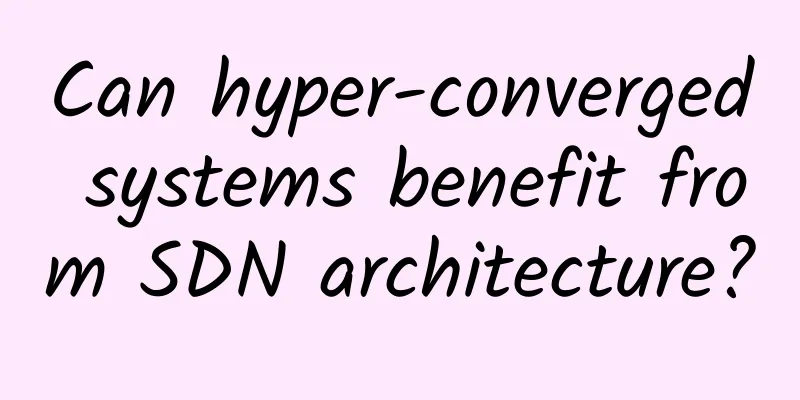Can hyper-converged systems benefit from SDN architecture?

|
Hyperconverged systems are rapidly gaining popularity due to the tight integration of computing, storage, and networking, and the resulting ease of deployment and management.
While tight integration is required, these systems share many of the same networking challenges as other data center deployments, including requirements for scalability, automation, security, and traffic management. In addition, they also need to link to other data center resources in the data center, remote data centers, and the cloud. Software-defined network architectures can alleviate some of the scaling, automation, security, and connectivity challenges of hyperconverged system deployments. Hyperconverged systems integrate storage, computing, and networking into a single system (box or pod) to reduce data center complexity and alleviate deployment challenges associated with traditional data center architectures. Hyperconverged systems include hypervisors, software-defined storage, and internal networks, all managed as a single entity. Multiple pods can be networked together to create shared computing and storage pools. The hyperconverged market is expected to grow rapidly in the coming years, from about $1 billion to more than $5 billion. Hyperconverged system providers include Nutanix, Dell EMC and VMware, as well as HPE, which focus on integrating compute and storage into a single scalable resource. Advantages and challenges of hyperconverged systems Network requirements for hyperconverged systems The network in a hyperconverged system is dedicated to establishing and maintaining communications between the compute and storage elements and is typically proprietary. Some of the key network elements required for a hyperconverged system include:
Software Defined Network Architecture In a software-defined network architecture, the network control plane is abstracted or separated from the underlying network hardware. In addition to abstraction, software-defined networks also include the following properties:
Many aspects of software-defined network architecture involve hyperconverged systems in the data center. For example, it can help connect or manage internal traffic, data center communications, and networks outside the data center. The networking industry currently offers software-defined networking architecture elements to help customers scale and network clusters of hyperconverged systems. Other vendors, including Cisco, HPE and VMware, are supporting communications between hyperconverged systems and other data center and cloud-based elements. |
<<: 10 things to know about LoRaWAN and NB-IoT
Recommend
HostDare: 38% off on CN2 GIA line in Los Angeles, starting at $24.4/year, 20% off on Japan VPS
HostDare's discount codes have been updated a...
Hypere: £12/quarter KVM-AMD Ryzen9/2GB/70G NVMe/10Gbps unlimited traffic/UK data center
Hypere should be a relatively new foreign hosting...
A complete guide to the development of TCP/IP
[[415786]] In the late 1950s, during the Cold War...
HostNOC: $39.99/month-E3-1230v2/16GB/1TB/100TB/Los Angeles data center
HostNOC is a foreign hosting company founded in 2...
Inside ViaWest's innovative, ultra-secure data centers
The entrance to ViaWest's data center in Chas...
In 2016, the global demand for optical fiber will reach 425 million core kilometers, and China will account for 57% and determine the industry structure
December 12 morning news (Jiang Junmu) The global...
Five communication methods between processes required for interviews
Inter-Process Communication (IPC) refers to the t...
How to achieve end-to-end network slicing?
GPP defines network slicing as one of the main fu...
5G, you will be able to make phone calls
Yes, the title is correct. 5G will enable phone c...
Managing a data center requires foresight
More and more businesses are finding that in orde...
V5.NET: 30% off US/Hong Kong cloud servers, starting from HK$42 (≈RMB35) per month
V5.NET is a company that provides cloud servers a...
SD-WAN vs. VPN: How Do They Differ?
When it comes to comparing SD-WAN vs. VPN service...
Quality, innovation and excellence, Ruijie Networks releases new products for general education in smart classrooms
On April 20, Ruijie Networks held an online launc...
The secrets of the black industry: the things about the "coding platform"
Introduction The rapid development of Internet bu...
Cisco's Wei Songbin: Cisco makes people's work and life smarter, simpler, safer and more convenient
[51CTO.com original article] Reporters have atten...









